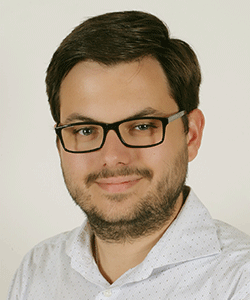
All swimming pool facilities face the same struggle: how to achieve clean water quality with proper disinfection while maintaining a safe and healthy environment for its patrons and staff. Among the allowed disinfection techniques, chlorination is one of the few which guarantees secondary disinfection [the presence of a disinfectant in the pool water at every time] and has therefore become a widely adopted standard requirement. However, when the dosed chlorine comes in contact with organic matter released by bathers, particularly nitrogen or carbon compounds, chloramines and trihalomethanes (disinfection byproducts [DBPs]) are respectively formed. Both turned out to be detrimental for human health after prolongated exposure. Professional swimmers and pool staff report ocular, cutaneous, or respiratory symptoms like skin or eye irritation, asthma, rhinitis, etc. Since the chlorine-based secondary disinfection, despite its side effects, is practically without alternative because of chlorine stability in pool water, there is the need of a way to limit DBPs concentration in pool environments. While many techniques have been developed to reduce DBPs, none are free from drawbacks.
This past summer, the Myrtha Breathe system was installed inside the Olympic Swimming Venue in the Paris La Defense Arena for the biggest aquatic sporting event in the world, and gave the opportunity for the system to be tested and proven.
In recent years, air stripping has taken hold in northern Europe as a volatile DBP removal technique from the water of pool balance tanks. Meanwhile, UV irradiation has become a widely applied technology to reduce the presence of DBPs in the pool water. Both techniques have some weaknesses. Firstly, the effectiveness of air stripping in the balance tank of limiting DBPs in the natatorium depends on the level of recirculation in the tank itself. Secondly, it was proved that UV irradiation definitely increases the chlorine demand of a swimming pool because UV rays are active also toward the free chlorine; UV-based processes can also promote the formation of some chlorinated DBPs.
To bypass these limitations, our engineers have developed a new technology which combines both air stripping and exhaust. This system introduces air stripping of the DBPs in the overflow gutters and extraction of the polluted vapors from the gutters via an adjacent conduit channel. As we developed the application of this technology through 2022 and 2023, we believe this will revolutionize how DBPs are handled in natatoriums world-wide.

Andrea Coletto graduated summa cum laude in environmental engineering. He is working as the leader of the Computational Engineering and MEP design teams for Myrtha Pools. He is concluding a Ph.D. course in Mechanical Engineering. During his studies, he investigated the fluid dynamics of swimming pools and the removal of chlorinated disinfection by-products.

Katy Houston is a former Division I student-athlete and graduate of the University of Southern California with a BS in Environmental Engineering and a MS in Civil Engineering. She is licensed as a Professional Engineer (Civil PE) in California, Alaska, Texas, and Colorado. Currently, Ms. Houston is the Director of Project Development & Engineering for Myrtha Pools USA and her duties include the management of aquatic project designs and product development for the U.S. market.

Ernest R. Blatchley III, Ph.D., P.E., BCEE, F.ASCE, is the Lee A. Rieth Professor in Environmental Engineering at Purdue University, where he holds a joint faculty appointment in the Lyles School of Civil Engineering and the Division of Environmental & Ecological Engineering. The Blatchley Group has been active in research related to swimming pool chemistry for roughly 15 years, with a recent focus on volatile compounds in water and their effects on IAQ in indoor pool facilities.